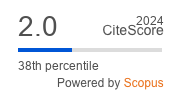The Hyoid Bone - the Anatomy of a Small Bone of the Neck in Hellenic and GrecoRoman Medical Literature
DOI:
https://doi.org/10.5644/ama2006-124.419Keywords:
Hyoid Bone, Galen, Theophilus ProtospathariusAbstract
Objectives. To understand the nomenclature of the hyoid bone.
Materials and Methods. Hyoid, a small bone of the neck, is a bony part that is rather difficult to unearth and discover among skeletal remains.
Results. The named was coined by the ancient Greeks, along with its anatomic description. Galen (2nd – 3rd c. AD) and Theophilus Protospatharius (7th century AD), facing religious and social barriers, succeeded in presenting its anatomy and suggesting its probable function in speech and swallowing, regarding the bone as a muscle pillar of the neck area.
Conclusion. Authorities of Hellenic antiquity surprise us with their accuracy and the resilience of their anatomical descriptions.
Downloads
Published
Issue
Section
License
Copyright (c) 2023 Maria Rachi, George Dagres, Panagiotis Georgakopoulos, Evaggelos Mavrommatis

This work is licensed under a Creative Commons Attribution-NonCommercial 4.0 International License.






